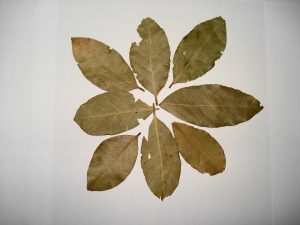 A bay leaf is an aromatic leaf that can be used in a similar manner to a herb or spice. Added to all kinds of cooking – typically anything hearty and warm – it will help to provide additional flavour and really add to the richness.
A bay leaf is an aromatic leaf that can be used in a similar manner to a herb or spice. Added to all kinds of cooking – typically anything hearty and warm – it will help to provide additional flavour and really add to the richness.
Whether you are flicking through a German cookbook or a French cookbook, you’ll find this is a food that has a huge number of excellent uses and that you should definitely keep to hand.
In this post, we’ll explore where the bay leaf comes from, how it is used, and some tips for use.
About Bay Leaves
Bay leaves actually come from a number of different plants. Common examples include Bay Laurel, California bay leaf, and Indonesian bay leaf. The leaves are made of essential oils, which include eucalyptol, terpenes, and sesquiterpenes. These are what infuse with the food as you cook, and what add to the flavor and aroma.
Unlike some other herbs – such as basil – this means that you do not add the bay leafs to the sauce pans right at the end. Instead you add the bay leaves right at the beginning and then leave to simmer. Keep in mind then, that they will add flavor and aroma gradually and this means your dish may taste different at the end compared with the start!
As to what it tastes like – eating a bay leaf whole is a sharp and pungent experience! This is one of the most important tips when cooking with bay leaves in fact: always remember to remove them before you serve up!
When you add them to cooking however, bay leaves will provide more from their aroma than from their taste. The aroma is floral and similar in some ways to oregano and thyme when dried.
Oh and as a nice benefit, bay leaves are also meant to be good for health – improving everything from arthritis to bronchitis!
Cooking With Bay Leaves
When it comes to cooking with bay leaves, there are many things that it can be paired with. It happens to go extremely well with vegetables like broccoli and cauliflower however, and is commonly found in hearty British cookbooks.
At the same time though, it is also very commonly used alongside meats like lamb and like chicken. If you are making a hot pie, a stew, or a roast dinner, then using bay leaves is a common and popular option.
When understanding the role of bay leaves or any other herbs, the best thing to do is always to try making a recipe that includes them as an integral part. In this case, let’s try to make a chicken Jambalaya. Throw on your apron and let’s go!
For this, you will start out by taking your cutting board and your food chopper and slicing up some celery, onion, and green pepper. You’ll then add to this some garlic, Cajun seasoning, bay leaves, and thyme. Finally, add some chicken stock. You can place all this into a sauce pan though there is no need to cook.
The bay leaves here will add a slight tanginess and some interesting aroma to the side, which you should be able to easily pick out among the other flavors. This goes great on the side of pasta or canned tuna.
While you’re here, be sure to check out our kitchen product reviews!